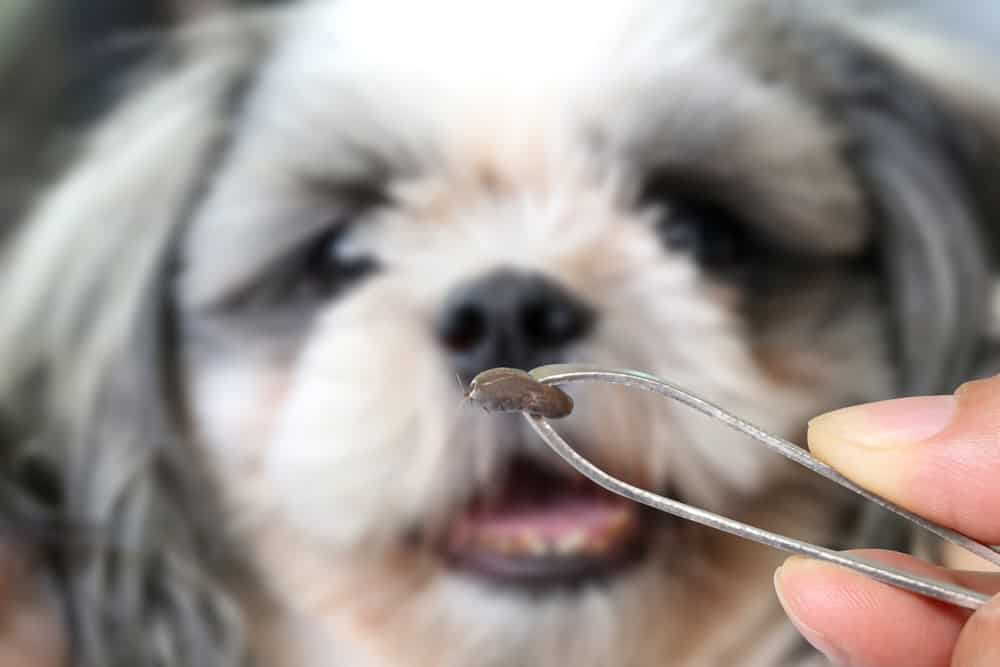“This post contains affiliate links, and I will be compensated if you make a purchase after clicking on my links.”
By Lauretta Williams
Fleas and ticks do not have a great reputation in the pet world. They can spread illnesses and diseases, not only to pets but to their owners as well. Worse still, there are more to these tiny, bloodsucking creatures than meets the eye. So, as knowledge is the best way to defend against a pest, here are 14 surprising facts about fleas and ticks.

How fleas and ticks are similar
Fleas and ticks often go hand in hand and there is a good reason for that. They share a few similar characteristics, such as they are both bloodsuckers that can live on your pets. They have sharp mouths that are designed to slightly cut into the skin of a pet or human and get to sucking out from the blood vessels. This is why your pets may experience itchiness or redness as a side effect of a flea or tick bite. They can also spread diseases from pets to pets, pets to humans, and humans to humans. These are all similar traits that exist between these tiny creatures.
Everything you need to know about fleas
Fleas differ slightly from ticks. Fleas are insects that have six legs but no wings which is why they like to jump around. According to fantastic pest controller Jordan Foster, adult fleas don’t like to make big leaps of faith, they tend to stay where they land until they die. Therefore, how fleas spread from pet to pet, pet to house, and house to human is through the eggs or fleas dropping from one carrier to another. Sometimes these creatures will end up bringing their friends, too, which results in an infestation.
Fleas like warm weather and the diseases they spread can cause skin issues or flea allergy dermatitis.
7 facts about fleas:
- Female fleas love to eat. They can suck up to 15 times their body weight, daily
- Female fleas are slightly larger than their male counterparts
- So far there are over 2000 species of fleas in the world
- Female fleas not only love to eat but they love to lay their eggs. They can lay their first batch 35 to 48 hours after their first bloody meal. Plus, they can lay approximately 2,000 eggs in their lifespan
- Their lifespan is about two to three months
- Fleas have a week to find a bloody meal or they cease to exist
- But fleas can also live for 60 to 100 days (their entire life) in between their meals after their first one if they keep their movements to a minimum
Once you discover that you have fleas on your pet, it’s best to take the necessary measures to get rid of them before the problem grows. If they spread from your pet to your home then you may want to look into getting a flea fogger for the house to kill off the pests, as well as looking into how to keep your yard pest-free.
Related: Flea and Tick Medications: What Are Your Options

Everything you need to know about ticks
Ticks are not insects; they are arachnids (a relation to the spider family). They can have six to eight legs. Ticks are actually the ones that like to move around a lot. They can stay on a host for two weeks at a time before finding a new one. And their lifespan is up to three years, depending on their environment.
Like fleas, they also like the summer months, but they can live under the snow during winter. Their favorite, preferred, diseases to spread are Lyme disease or Rocky Mountain spotted fever.
7 facts about ticks:
- There are more than 800 species of ticks (so far). Plus, they fit into two subtypes: Ixodidae, which is the more common type of tick with a hard-like shell; Argasida, less common with a soft exoskeleton/shield
- Ixodidae ticks like to feed for a long time (as in one long session), while Argasidae ticks have to take breaks in between their sucking
- Ixodidae ticks have certain compounds in their saliva such as anesthetic and anti-inflammatory. This makes it so that their host/s do not know that they have been bitten. Plus, the host/s immune system may find it difficult to find a threat in their system. This is because Ixodidae ticks’ saliva also have proteins that are always changing their compositions making it difficult to track
- Female ticks swell up after they have eaten, but Ixodidae ones swell up more when compared to the Argaside females
- After mating, the male ticks die
- While ticks can go from one host to another, they seem to limit themselves to three hosts. They decide on the hosts depending on what stage of their life cycle (larvae, nymph, adult) they are in
- Some species of ticks can have a neurotoxin in their saliva which can cause ‘tick paralysis’. This can show between five and nine days and it starts with the legs feeling weak. It can cause paralysis which may further lead to breathing difficulties or death. However, the side effects disappear as soon as the tick is removed
When you see a tick on your beloved pet you should remove it straight away. The best and quickest way to do this is to grab the tick by their head (touching your pet’s skin) and pulling them out. You should wear gloves to do this or you can use tweezers. There may be a tiny bit of blood depending on how long the tick has been feasting. If your pet is exhibiting any unusual symptoms take them to the vet immediately.
Next, wrap the tick in tape or put them in a container to suffocate them. You can also drop them in some rubbing alcohol, vinegar, or bleach with a lid (so they cannot get out) to kill them. Once all this is done and the tick is dead, you should wash your hands regardless if you wore gloves or used tweezers.
Final words
Fleas and ticks are quite different from each other even though there are very few similarities. While they may be interesting to some people, to many pet owners they are potentially dangerous pests. Having some knowledge about how they live and thrive could protect you and your pets from their attention.
Lauretta Williams is a self-proclaimed blogging addict. She loves spending her time listening to music, playing with her cat, Coco, and developing content on topics relating to animal health and lifestyle for her site, PawMaw. She and Coco currently live in Los Angeles, CA.





















